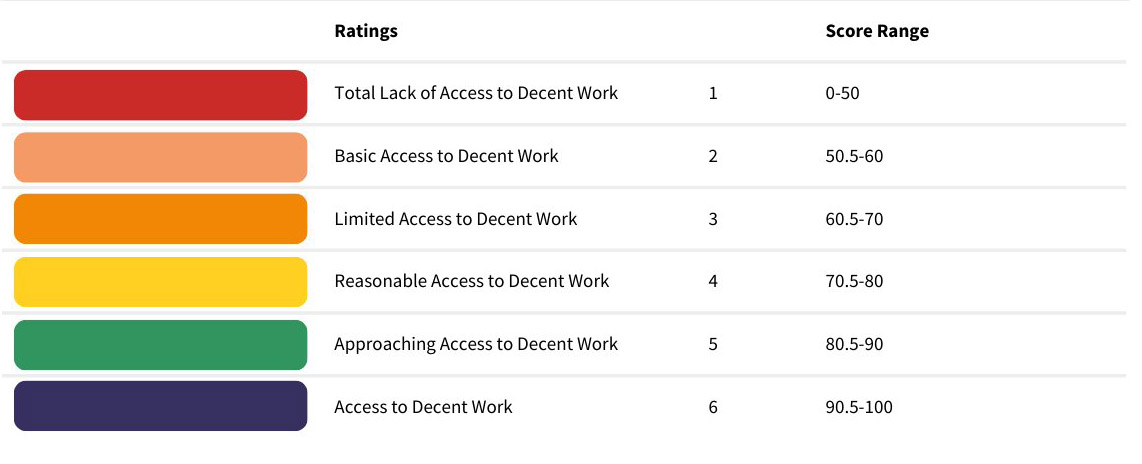The Wagelndicator Foundation and the Centre for Labour Research co-produced the first edition of the Labour Rights Index in 2020. The second edition was released in October 2022, and it included 135 countries. This is the third edition of the Labour Rights Index, covering 145 countries.
2024 - The Index in Text - Explanation
With a great deal of pride, we at the WageIndicator Foundation are excited to launch the third edition of the Labour Rights Index in 2024. The Labour Rights Index is unique in its ambition and scope, now scoring labour laws in 145 countries relative to the Decent Work Agenda of the International Labour Organisation.
In September 2015, 193 states decided to adopt a set of 17 goals to end poverty and ensure decent work as part of the Sustainable Development Goals (SDGs). Each goal has specific targets to be achieved over 15 years. There are 169 targets and 231 indicators listed under these 17 SDGs.[10] The Labour Rights Index aims at an active contribution to the Sustainable Development Goals by providing necessary (complementary) insights into de jure provisions on issues covered in particular by SDG 5 (Gender Equality), SDG 8 (Decent Jobs), SDG 10 (Reduced Inequalities) and SDG 16 (Strong Institutions).
The Wagelndicator Foundation and the Centre for Labour Research have developed the Labour Rights Index, which looks at the status of countries in terms of providing laws related to decent work for the labour force. The data set covers 10 indicators for 145 countries. The Index aims to provide a snapshot of the labour rights present in the legislation of the countries covered.
The Labour Rights Index tracks the changes in workplace rights during the past two years. However, some countries have enacted regressive and repressive labour legislation, undermining and frustrating workers' rights.
The section describes some major trends before delving into detail at the country level.
The Country Profiles section shows a two-page profile for each of the 145 countries covered in the Labour Rights Index 2024. The country profiles are informative about the major aspects of labour legislation in an economy.
The scores for each indicator are obtained by computing the unweighted average of the answers under that indicator and scaling the result to 100. The final scores for the countries are then determined by taking each indicator's average, where 100 is the maximum score to achieve. Where an indicator has four questions, each question/component has a score of 25. Where an indicator has five questions, each question/component has a score of 20. A Labour Rights Index score of 100 would indicate that there are no statutory decent work deficits in the areas covered by the Index.

Between 1 January 2022 and 1 January 2024, we recorded 99 Changes to indicator scores. There were more than 70 instances where around 30 countries introduced positive legal reforms, resulting in a change of score on a component to 1. In 20 cases, scores improved because 20 countries revised their minimum wages during the last two years (after 1 January 2022). These countries had earlier not updated their minimum wages during the period of 1 January 2020-1 January 2022.
Appendix - Background
- Section 1 INSIGHTS
- Section 2 CONCEPTUAL FRAMEWORK
- Section 3 SCORES AND RANKINGS
- Section 4 INDICATORS FOR DECENT WORK
- Section 5 CONTEXTUALISING AND NORMALISING THE COUNTRY SCORES ON THE LABOUR RIGHTS INDEX
- Team Behind the Index
- Notes
- Glossary
- Bibliography
- Copyright and Disclaimer
- Labour Rights Index 2024 - Full PDF File
- Methodology and FAQ
- Labour Rights Index 2024 - Insights
